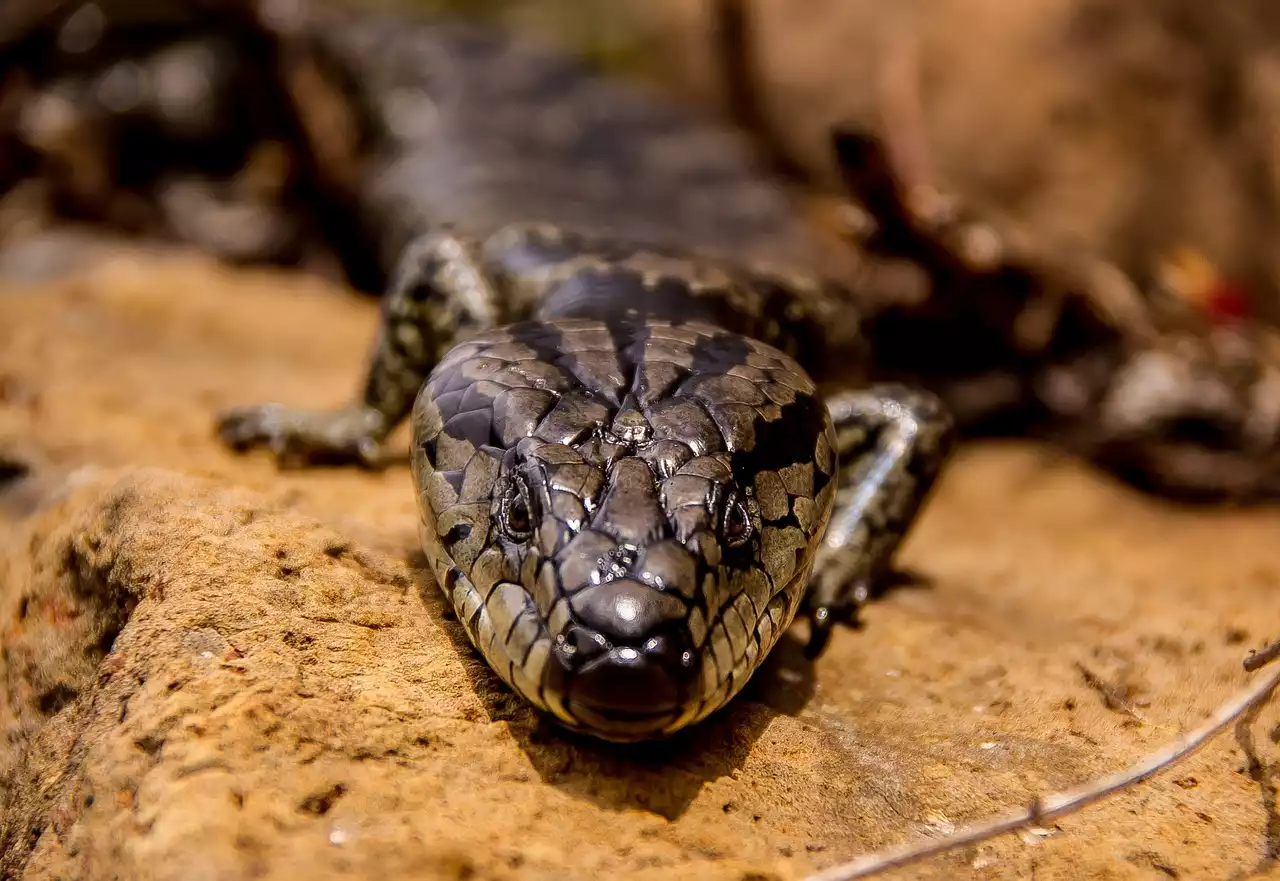In the wild, skinks are typically shy, secretive loners. However, there are several species of skink that thrive in a home environment and make fantastic pets. The pink tongue skink is one such lizard. They’re relatively easy to care for and can become tame enough to be handled regularly. Handling them is an important part of establishing a relationship with your pet skink and makes the entire experience more enjoyable. Read on to learn more about keeping a pink tongue skink as a pet!
Basics of Keeping a Pink Tongue Skink
Pink tongue skinks are small, arboreal lizards that are native to Indonesia. They are also known as “blowing lizards” because they will often “blow” air out of their mouth and nostrils when they feel threatened. These skinks are one of the most popular species of exotic pet reptiles. They’re easy to care for and make great starter lizards for beginners. Pink tongue skinks are diurnal lizards. This means they are most active during the day. If you want to get the most out of your skink’s personality, you’ll need to provide a basking area that gets plenty of sunlight. Skinks are insectivores, which means they’re designed to eat bugs. You’ll need to make sure you have plenty of live crickets or other bugs available for your skink to eat.
Housing
Pink tongue skinks are arboreal lizards, which means they spend most of their time in trees. In the wild, they usually build their own tree-hiding spots. However, in captivity, they’re often happy to hide in a simple box. When choosing a skink terrarium, make sure to get the biggest one you can afford. A smaller terrarium will work, but your skink will get less exercise and be more likely to get sick. In general, skinks do best in a humid environment. Your skink’s terrarium should never be completely dry. One way to keep the humidity in your skink’s habitat high is to put a water dish in the cage.
Diet
Like other lizards, skinks are herbivorous reptiles. This means they’re designed to eat mostly plants. When keeping pink tongue skinks, you’ll need to provide a variety of greens, vegetables, and fruits. These can include dandelion leaves, mustard greens, and collard greens. You can also feed your skink romaine lettuce, broccoli, and carrots. Occasionally, you can feed your skink a small number of insects. However, skinks should never be fed a diet composed entirely of insects.
Care and Maintenance
Skinks can be a little messy, so you’ll need to clean their cage out regularly. Remove soiled bedding, and wash the rest of the cage about once a week. You can use a commercial reptile cage cleaner for this. Like many reptiles, skinks are sensitive to toxins. Be sure to avoid products that contain pesticides. You should also get your skink a few lizard toys to play with. You can get toys at any pet store that carries reptile supplies.
Train your Pink Tongue Skink
Like many other lizards and reptiles, skinks can be trained to do tricks. Training a skink can be a fun and rewarding way to build a deeper bond with your pet. There are a few different methods you can use to train your pet skink. You can try clicker training, operant conditioning, or even just good old repetition. It may take some patience and practice, but with these methods, you can train your skink to do a wide variety of tricks.
Breeding
Breeding pink tongue skinks is pretty easy. All you need to do is provide your skinks with an appropriate environment and some extra calcium. When keeping skinks, make sure the temperature stays between 80 and 90 degrees Fahrenheit. You’ll also want to make sure your skinks get plenty of sunlight. Once your skinks are in breeding condition, you can put a male and female together. It’ll take a few months, but if everything goes right, your skinks will produce baby skinks!
Wrapping Up
Skinks are diurnal lizards that are native to Indonesia. They are very popular as exotic pet reptiles due to their small size, ease of care, and relatively low cost. Skinks are shy and reclusive in the wild, but in captivity, they thrive as pets when given the right care and environment. Skinks need plenty of heat, sunlight, and insects to eat, as well as a humid environment to thrive! If you’re interested in keeping a skink as a pet, you’ll need to provide plenty of heat and sunlight. You’ll also need to make sure your skink has enough food to eat and a nice, clean habitat to live in. Keeping a skink can be a rewarding experience for both you and the lizard.


 What Sets British Fashion Apart From the Rest?
What Sets British Fashion Apart From the Rest?
 What are the Best Foods to Steam Cook?
What are the Best Foods to Steam Cook? The Creative Issey Miyake Japanese Fashion Designer
The Creative Issey Miyake Japanese Fashion Designer The Social and Intelligent Iguana
The Social and Intelligent Iguana Keeping a Leopard Gecko at Home
Keeping a Leopard Gecko at Home How to Care for a Bearded Dragon
How to Care for a Bearded Dragon Housing, Feeding and Care of the Crested Gecko
Housing, Feeding and Care of the Crested Gecko